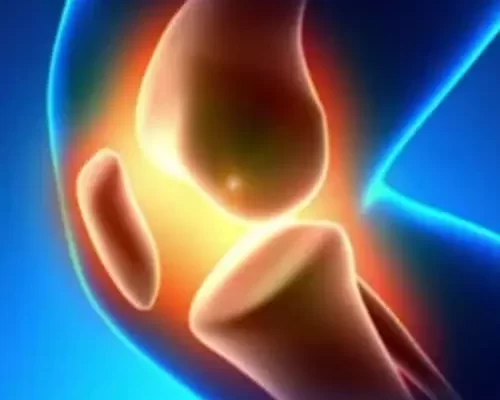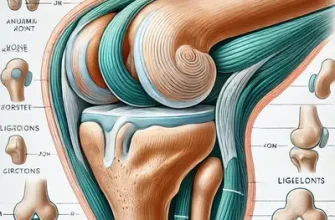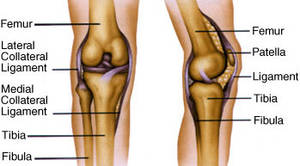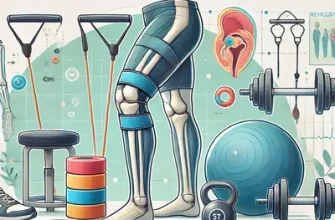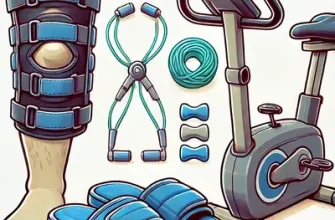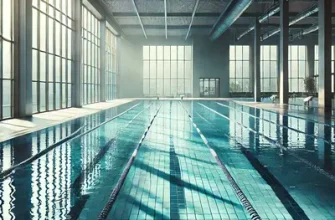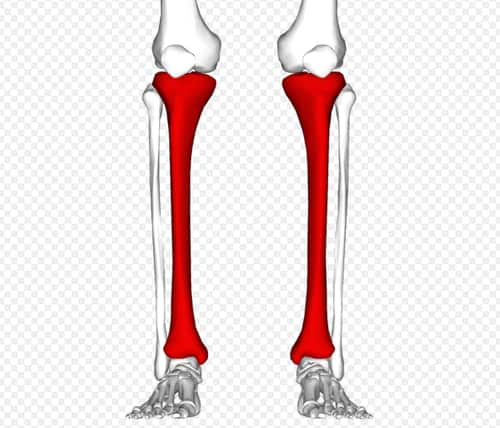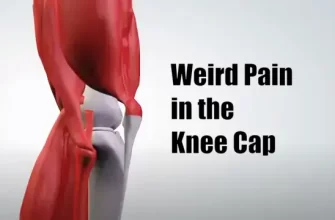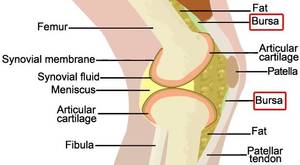Varus knee, commonly known as “bowleggedness,” is a condition where the knees bend outward while standing, creating a gap between the knees despite the ankles touching. This alignment issue can lead to joint discomfort and could eventually cause knee problems if not addressed properly.
Varus Knee Symptoms
It is essential to be aware of the symptoms as early detection can lead to better management and treatment options. Here are some of the key symptoms associated with varus knee:
- Misaligned Knees
- When standing straight with feet together, there is a noticeable gap between the knees.
- The knees do not touch even when the ankles and feet are touching.
- Unusual Gait
- A person with varus knees may walk with an awkward gait.
- They may waddle or have an outward swing to their walk.
- Knee Pain
- Discomfort or pain around the inner knee area which may worsen with activity.
- The eventual development of osteoarthritis in the knees due to uneven wear and tear.
- Difficulty with Physical Activity
- Limitations in performing activities that require bending the knees such as squatting.
- Potential difficulty walking long distances or climbing stairs.
- Instability or Weakness
- A feeling that the knees are going to give out while standing or walking.
- Increased risk of falls due to poor alignment of the lower extremities.
- Visible Deformity
- Clear visual sign of curvature in the lower legs.
- Knees might look as though they are bowed outwards when viewed from the front.
- Wearing of Shoes
- Uneven wear patterns on shoes, especially on the inner soles.
- Need for special orthopedic shoes or inserts to correct the alignment.
- Tightness in Muscles
- Tightness in the muscles around the thighs and calves due to altered biomechanics.
- Strain in the hamstrings, quadriceps, or calf muscles.
- Reduced Range of Motion
- Reduced ability to fully straighten or bend the knees.
- Loss of flexibility can hinder basic movements.
- Joint Stiffness
- Stiffness in the knee, which is more pronounced in the morning or after sitting for extended periods.
- The stiffness may lessen with movement as the day progresses.
Varus Knee Causes
Various factors can lead to the development of a varus knee, and it is important to understand these causes for proper diagnosis and treatment. Here’s a listicle outlining the common causes of varus knee:
- Congenital Conditions
- Genetics: Some individuals are born with varus knee due to genetic predisposition.
- Developmental Issues: Improper development of the bones while in utero can cause varus alignment at birth.
- Post-Traumatic Causes
- Fractures: Injuries to the lower limb bones, particularly around the knee, can heal improperly and lead to varus deformity.
- Ligament Injuries: Damage to the ligaments of the knee, such as the ACL or PCL, might result in instability and varus malalignment.
- Degenerative Causes
- Osteoarthritis: Wear and tear of the knee joint can result in cartilage loss on one side of the knee more than the other, causing the knee to angle in a varus position.
- Rheumatoid Arthritis: Inflammatory processes can also affect joint alignment.
- Metabolic Bone Disorders
- Rickets: A deficiency in Vitamin D, calcium, or phosphate can lead to rickets in children, which weakens bones and can result in varus deformity.
- Osteomalacia: Similar to rickets but occurring in adults, leading to softening of the bones and potential varus alignment.
- Neuromuscular Diseases
- Muscular Dystrophy: Progressive weakness of the muscles can affect leg alignment.
- Cerebral Palsy: A group of disorders that affect movement and muscle tone or posture.
- Growth Plate Disturbances
- Blount’s Disease: A growth disorder of the shinbone (tibia) that causes the lower leg to angle outwards.
- Infection or Tumor: Damage to the growth plate by an infection or tumor can also alter the leg’s growth pattern resulting in varus deformity.
- Iatrogenic Causes
- Surgery: Postoperative changes after surgery to the knee or surrounding structures, like overcorrection during osteotomy.
- Improper Casting: Improperly applied casts for fractures can result in a varus deformity as the bone heals.
Diagnosis
Diagnosing varus knee is crucial for receiving appropriate treatment.
Step 1: Observe the Symptoms
Look for the following signs:
- A noticeable gap between the knees when standing with feet together.
- Uneven wear patterns on shoes, indicating abnormal walking stance.
- Pain or discomfort in the knees, hips, or ankles.
- Difficulty with balance or walking.
Step 2: Seek Professional Evaluation
Contact a healthcare provider who specializes in musculoskeletal disorders such as:
- An orthopedist.
- A rheumatologist.
- A physical therapist.
Step 3: Expect Physical Examination
During your appointment, the healthcare provider will:
- Review your medical history.
- Conduct a physical examination of your legs.
- Observe your walking pattern.
Step 4: Undergo Imaging Tests
Doctors may require imaging tests for an accurate diagnosis:
| Test Type | Purpose |
|---|---|
| X-rays | Identify bone deformities and joint spacing. |
| MRI | Assess the condition of cartilage, tendons, and ligaments. |
| CT Scan | Provide a detailed cross-sectional image of knee structures. |
Step 5: Evaluation of Alignment
The doctor will measure the mechanical axis of the leg:
- A line will be drawn from the center of the hip to the ankle.
- The angle between this line and a line from the center of the knee to the ankle will be measured.
Step 6: Assess Severity
The severity can be classified as:
- Mild: Genu Varum less than 10 degrees.
- Moderate: Between 10-20 degrees.
- Severe: Genu Varum greater than 20 degrees.
Step 7: Consider Underlying Conditions
The doctor will look for conditions associated with varus knee:
- Osteoarthritis.
- Rheumatoid arthritis.
- Rickets or other bone development issues in children.
Varus Knee Treatment Options
Treatment options for varus knee vary depending on the severity of the condition as well as the age and overall health of the individual. Below are some common varus knee treatment options:
- Observation and Monitoring:
- For children, many mild cases of varus knee correct naturally with growth.
- Regular check-ups may be recommended to ensure that the legs are straightening over time.
- Physical Therapy:
- Physical therapists can create personalized exercise programs to strengthen leg muscles and improve balance.
- Specialized exercises can help improve alignment and gait.
- Orthotic Devices:
- Orthotic devices, such as braces or shoe inserts, may be used to correct improper walking patterns.
- These devices can distribute weight more evenly across the knee joint.
- Nonsteroidal Anti-Inflammatory Drugs (NSAIDs):
- For individuals experiencing pain due to varus knee, NSAIDs can be prescribed for pain relief.
- These medications can reduce inflammation associated with the condition.
- Weight Management:
- Excess weight can exacerbate the stress on bowlegged knees.
- Weight loss through diet and exercise may reduce symptoms and slow down disease progression.
- Corticosteroid Injections:
- In cases with significant inflammation, corticosteroid injections may be used to reduce swelling.
- This treatment is often a temporary solution and not a long-term cure.
- Osteotomy:
- Surgical realignment of the bones, known as osteotomy, can be performed to correct varus knee alignment.
- This procedure involves cutting and reshaping bones to redistribute weight onto healthier parts of the knee.
- Total Knee Arthroplasty (Knee Replacement Surgery):
- In severe cases, where the knee joint is significantly damaged, a total knee replacement may be necessary.
- This surgery involves replacing parts of the knee joint with artificial components.
- Guided Growth for Children:
- For children with varus knee, guided growth surgery can be used to correct the deformity.
- This minimally invasive procedure involves placing a small plate near the knee to direct future growth.
- Lifestyle Modifications:
- Activities that put stress on the knees such as certain sports or heavy lifting should be avoided or modified.
- Low-impact exercises, like swimming, can be beneficial for maintaining strength and flexibility without straining the knees.
Varus Knee Prevention and Lifestyle
Varus knee, often referred to as bow-leggedness, is a condition in which the knees are abnormally bent outward. This can lead to joint pain, increased risk of arthritis, and difficulties with mobility. Here’s a list of the useful tips on how to prevent Varus knee and maintain a lifestyle that supports knee health.
- Maintain a Healthy Weight
- Extra pounds put added stress on your knees.
- Embrace a balanced diet full of vegetables, fruits, lean proteins, and whole grains.
- Monitor your caloric intake to avoid gradual weight gain.
- Stay Active
- Regular physical activity helps maintain muscle strength and joint flexibility.
- Low-impact exercises like swimming, cycling, and walking are kind to your knees.
- Strength training can help build muscles around the knees, offering better support.
- Wear Proper Footwear
- Shoes should provide good arch support and cushioning.
- Avoid high heels and ill-fitting shoes as they can alter your stance.
- Consider orthotic inserts if necessary.
- Practice Good Posture
- Stand and sit with your shoulders back and spine straight.
- Align your body so your weight is evenly distributed on both legs.
- Protect Your Joints
- Use knee pads when engaging in activities that put pressure on your knees.
- Avoid activities that involve repetitive stress on your knees.
- Employ ergonomically designed furniture and tools.
- Know Your Limits
- Recognize when to rest if you experience knee pain.
- Don’t push through severe or unusual pain.
- Pay attention to what your body is telling you.
- Get Regular Check-ups
- Early detection of Varus knee can lead to more effective treatments.
- Consult a physical therapist or orthopedic specialist for personalized advice.
- Regularly visiting your healthcare provider can keep you on track with knee health.
- Corrective Exercises
- Engage in exercises that target leg muscles to correct Varus knee gradually.
- Consult a professional to tailor specific exercises for your condition.
- Commit to a daily or weekly routine for the best outcomes.
- Manage Underlying Conditions
- Control diseases like diabetes and arthritis that can exacerbate knee issues.
- Take medications as prescribed by your healthcare provider.
- Be proactive about your overall health to avoid complications.
- Nutrition for Joint Health
- Consume foods rich in omega-3 fatty acids, like fish, to reduce inflammation.
- Incorporate vitamins C, D, and K, along with calcium into your diet for strong bones.
- Stay hydrated as proper fluid intake is beneficial for joint lubrication.
Conclusion
While factors like genetics can influence the development of Varus knee, adopting a healthy lifestyle can do much to prevent it or keep it from worsening. Prioritize activities and habits that strengthen and protect your knees, and don’t hesitate to seek professional guidance when necessary. Your knees will thank you for the care and attention you provide in ensuring their continued health and functionality.

